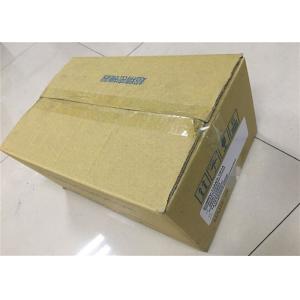Yaskawa Industrial Motor 8.34N.m InsF AC SERVO MOTOR SGMRV-13ANA-YR1A Drip-proof
Add to Cart

Yaskawa Industrial Motor 8.34N.m InsF AC SERVO MOTOR SGMRV-13ANA-YR1A Drip-proof
Place of Origin:
Japan, Japan
Brand Name:
Yaskawa
Model Number:
SGMRV-13ANA-YR1A
Usage:
Electric Bicycle
Certification:
UL
Type:
Servo Motor, Servo Motor
Construction:
Permanent Magnet
Commutation:
Brush
Protect Feature:
Drip-proof
Speed(RPM):
1500RMP
Continuous Current(A):
14A
Efficiency:
IE 1
Brand:
WTL
Model:
SGMRV-13ANA-YR1A
Power:
1.3KW
Voltage:
200V
Current:
14A
Options:
With Brake
Series:
SGMRV
SGMRV-05ANA-YR11
SGMRV-05ANA-YR21
SGMRV-09ANA-YR11
SGMRV-13ANA-YR1A
SGMRV-13ANA-YR21
SGMRV-13ANA-YR31
SGMRV-20ANA-YR11
SGMRV-30ANA-YR12
SGMRV-30ANA-YR21
SGMRV-37ANA-YR12
It offers a wide range of motors including Sigma 2/3/5/7 rotary AC
servo motors and SERVOPACKS. These brushless motors are able to
handle speeds up to 6000 rpm with options of single and dual axis
models. All motors are made to be compact, reliable, and durable.
SERVOPACKS are amplifiers for the motors that allow for more
precise control and timing. Every model features easy-to-use
software that allows you to integrate your motor/amp easily into
your existing automation set up. Some of the popular models that
MRO Electric and Supply can provide are:
Rotary Motors - SGM7J, SGM7A, SGM7P, SGM7G, SGMMV, SGMJV, SGMSV,
and SGMVV
Gear Motors - S7J, S7A, S7P, and S7G
SERVOPACKS - SGD7W/S MECHATROLINK-III, SGD7W/S EtherCAT, SGD7S
Analog, SGDV MECHATROLINK-II/III, SGDV EtherCAT, and SGDV Analog
What is the difference between having permanent magnets and having electromagnets in a DC motor? Does it make it more efficient or more powerful? Or just cheaper?
When I received this question on the High School Physics bulletin board, I sent it to John Storey who, as well as being a distinguished astronomer, is a builder of electric cars. Here's his answer:
In general, for a small motor it is much cheaper to use permanent magnets. Permanent magnet materials are continuing to improve and have become so inexpensive that even the government will on occasion send you pointless fridge magnets through the post. Permanent magnets are also more efficient, because no power is wasted generating the magnetic field. So why would one ever use a wound-field DC motor? Here's a few reasons:
- If you're building a really big motor you need a very big magnet and at some point a wound field might become cheaper, especially if a very high magnetic field is needed to create a large torque. Keep this in mind if you're designing a train. For this reason most cars have starter motors that use a wound field (although some modern cars are now using permanent magnet motors).
- With a permanent magnet the magnetic field has a fixed value (that's what "permanent" means!) Recall that the torque produced by the motor of a given geometry is equal to the product of the current through the armature and the magnetic field strength. With a wound-field motor you have the option of changing the current through the field, and hence changing the motor characteristics. This leads a range of interesting possibilities; do you put the field winding in series with the armature, in parallel, or feed it from a separately controlled source? As long as there is enough torque to overcome the load placed on the motor, internal friction etc., the weaker the magnetic field the *faster* the motor will spin (at fixed voltage). This may seem weird at first, but it's true! So, if you want a motor that can produce a lot of torque at standstill, yet spin to high speeds when the load is low (how's that train design coming along?) perhaps a wound field is the answer.
- If you want to be able to run your motor from both AC and DC (the so-called "universal" motor), the magnetic field has to reverse its polarity every half cycle of the AC power, in order that the torque on the rotor is always in the same direction. Obviously you need a wound-field motor to achieve this trick.
OTHER SUPERIOR PRODUCTS
| Yasakawa Motor, Driver SG- | Mitsubishi Motor HC-,HA- |
| Westinghouse Modules 1C-,5X- | Emerson VE-,KJ- |
| Honeywell TC-,TK- | GE Modules IC - |
| Fanuc motor A0- | Yokogawa transmitter EJA- |

